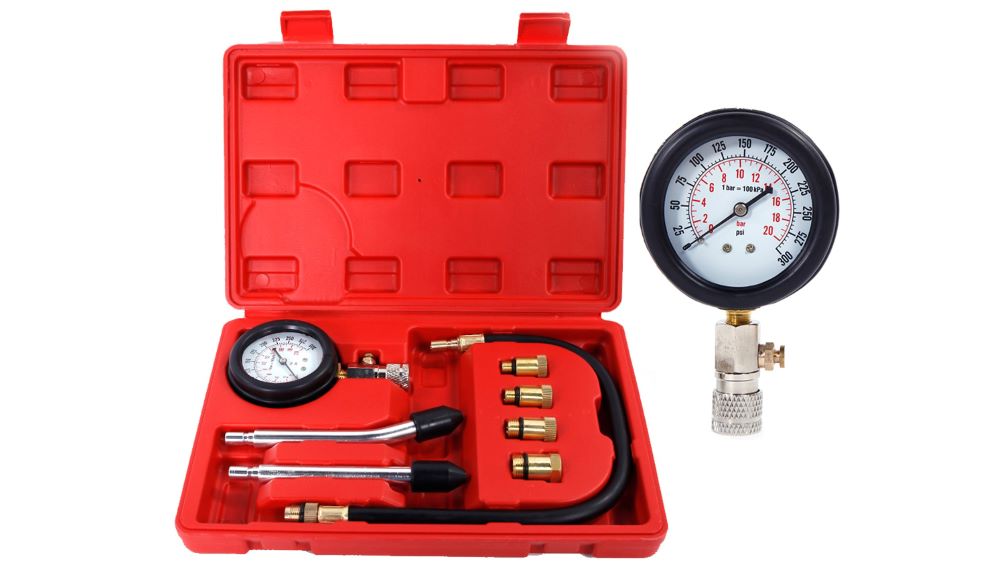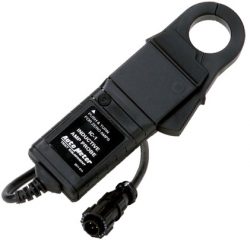Cranking compression test
A cranking compression test is performed by placing the measuring hose in the hole for the cylinder spark plug. The compression gauge is connected to the other end of the measuring hose. The gauge reads the air pressure created by the piston in the compression stroke. The read result is compared with the data from the vehicle specification.
Compression measurement means that the engine is cranked over, but not started. For newer vehicles, it is advisable to interrupt the fuel supply by removing the fuel pump fuse or relay. To obtain a correctly measured compression pressure, the engine must be started until at least 5 compression pulses are measured on the pressure gauge. If the measured compression pressure is low, the cause may be on the valve, piston seals, piston, cylinder walls, or cylinder head cover gaskets.
Gasoline engine compression measuring kit
Recommendation for measuring engine compression is to keep the engine at operating temperature, to remove all spark plugs, the battery should be fully charged or the starter should be connected, the throttle should be kept fully open and at least five compression pulses should be made on each cylinder ( the same number of pulses for each cylinder). All these conditions will help the engine to create maximum compression and to perform precise measurements.
When the service technician suspects after the power balance test that only one or two cylinders have extremely low compression, then only the spark plugs will be removed from those cylinders and a compression test will be performed. If the measured compression is quite low, it means that the engine has a problem with compression and it is necessary to perform an additional test of the cylinder. If the compression is reasonably close to the normal value from the specification, then the compression does not cause a problem and there is a possibility of error due to fuel or ignition that causes a power balance problem.
Cranking compression test
When performing a compression test, the final reading is not the only thing that is observed. If the piston rings are well sealed, then the first pressure pulse on the meter is at least half the pressure from the final reading.
When a low compression cylinder is found, put some engine oil (about one teaspoon) in the spark plug hole, start the engine a few turns, and check the compression again. If the compression is significantly increased, the problem is usually related to the piston rings or the walls of that cylinder, which indicates higher compression due to the short-term sealing ability due to the additional oil. Piston rings are an essential problem that usually requires the replacement of rings and engine repair. If the oil did not increase the compression, then the problem is probably a valve leak, a cylinder head seal, or a hole in the piston. The exact cause of the compression drop can be determined by a cylinder leak test.
Another way to measure compression is the dynamic compression test. This test uses a current clamp (inductive ammeter) connected to an engine tester that measures the current flow for the starter when the engine is started. As each cylinder appears on the compression stroke, the engine turns harder, so the electric starter is more loaded and draws more current. If each cylinder has the same relative compression, then the current pulse peaks will be similar. If the cylinder has low compression, then that instantaneous jump will be lower than the rest. This is a quick way to check if there is a compression problem. If in doubt then engine compression measurement should be performed.
Current clamp for engine tester
To perform a cranking compression test, follow these steps:
To perform a dynamic compression test, follow these steps:








